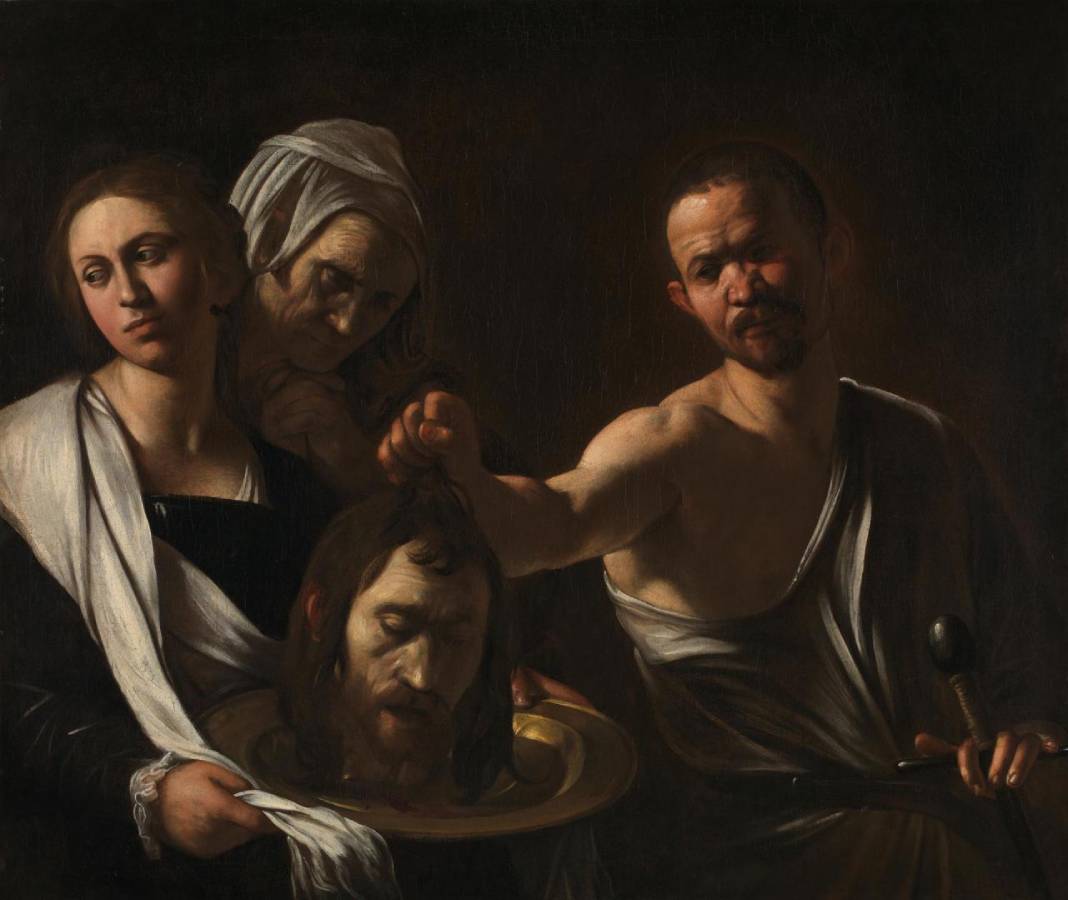Caravaggio (1571-1610)
Salomè con la testa del Battista (Salome receives the Head of John the Baptist)
c.1609–1610
Oil on canvas, 91.5 x 106.7 cm
National Gallery, London
The story of the death of Saint John the Baptist is related in the Gospel of Mark (6: 16–29). John had criticised King Herod for marrying his brother’s wife, Herodias, and she sought revenge. At Herod’s birthday feast, her daughter – not named in the Gospel but later identified as Salome – so delighted the King by her dancing that he promised her anything she asked for. Encouraged by her mother, she asked for the Baptist’s head; reluctantly the King agreed to keep his promise and had John beheaded.
This is a late work by Caravaggio, probably painted towards the end of his life in Naples, where he resided in 1606–7 and again in 1609–10. With an economy typical of his mature works, Caravaggio has reduced the story to its essentials, focusing on the human tragedy. He has moved away from the broader colour range and descriptive detail of his Roman works, such as The Supper at Emmaus, and conveys the scene’s emotional power through a more muted palette, pronounced chiaroscuro and dramatic gestures. The brutish executioner places John’s head on a salver held by Salome, whose serious expression and sidelong glance are enigmatic: is she turning away from the head in disgust or shame, appalled at the horror of what she has brought about? In contrast to the young and beautiful Salome is the elderly maidservant beside her, her face wrinkled with age and her hands clasped together in grief. The half-length format brings the figures up close, enhancing the dramatic impact of the scene. Although the composition appears simple and straightforward, it hides a sophisticated physical and psychological interplay between the main protagonists. Salome and the executioner are subtly linked by their poses – the angles of their heads echo each other and a strong raking light falls across their faces – but their role is very different. The executioner’s face is impassive as he thrusts the head towards Salome: he may have wielded the sword but the guilt for the Baptist’s death lies with her.
Caravaggio returned to the theme of John’s beheading more than once in his later years. As well as a vast canvas in St John’s Cathedral in Valletta, Malta, he produced a scene closely related to ours showing Salome with the Baptist’s head (Palacio Real, Madrid). The Madrid painting is the earlier of the two, probably dating from the artist’s first stay in Naples (1606–7), while the looser handling and pared down colours in our version – which lacks the bright red drapery enveloping Salome in the Madrid picture – suggests that it was painted in the final months of Caravaggio’s life.
Technically, this painting is typical of Caravaggio’s late style. The handling of the paint is freer than in his earlier works, with a broad application in place of finely modelled gradations, and the dark ground left deliberately exposed in several areas to provide the mid-tone in the shadows. The marked chiaroscuro and dramatic naturalism of Caravaggio’s late style, and his use of people drawn from the streets as models, had an enduring influence on painters in Naples such as Battistello Caracciolo, Mattia Preti and especially Jusepe de Ribera. (NG)
